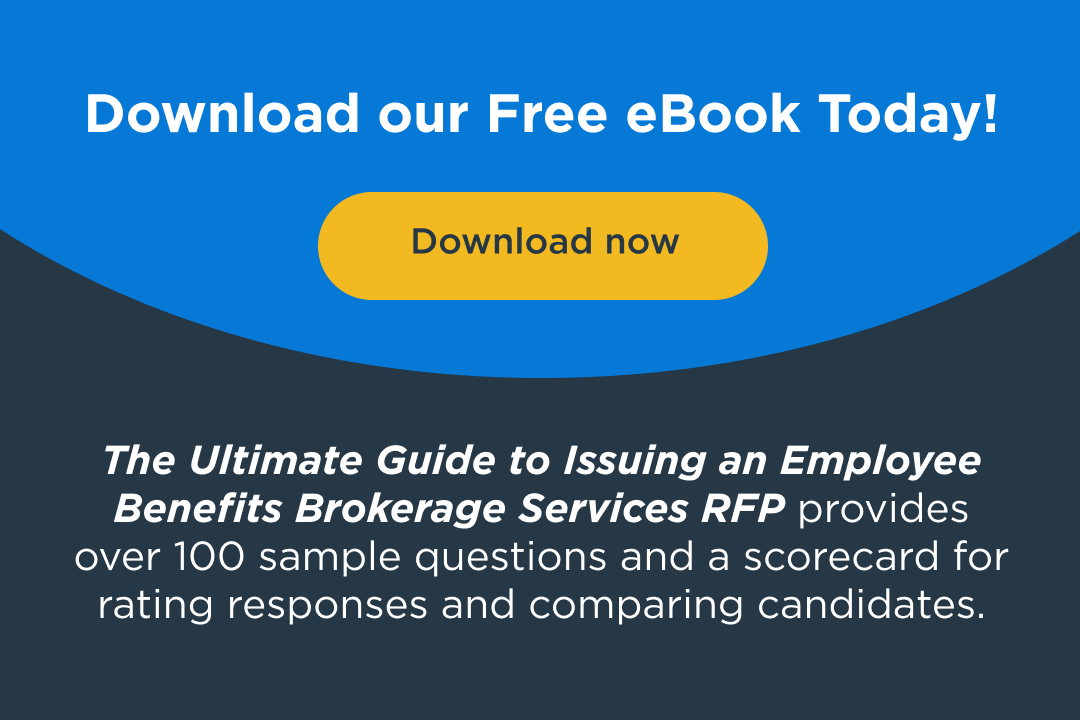Building Better Benefits: How Construction Companies Can Design Competitive and Compliant Employee Benefits Packages
February 1, 2025

The construction industry is unique in almost every aspect of employment—from project-based work and seasonal schedules to mobile workforces and high physical demands. These characteristics don’t just shape operations—they also create significant challenges when it comes to designing and delivering employee benefits packages.
Finance and HR leaders in construction firms must balance rising labor costs, talent shortages, job-site safety, and regulatory compliance while creating benefits plans that attract, retain, and protect both skilled and entry-level workers.
This blog post explores the key considerations, challenges, and best practices that construction companies should follow to develop benefit programs that meet workforce needs, comply with federal and union regulations, and support long-term growth.
The Construction Workforce: Why It Requires a Unique Benefits Strategy
Unlike many industries with centralized workforces, construction firms often manage distributed, diverse, and dynamic employee groups:
- High turnover and seasonality: Many construction workers are employed on a project basis.
- Field-based and mobile teams: Employees may move between job sites and regions, often without desk jobs or email access.
- Union vs. non-union workers: Union contracts can dictate specific benefits obligations, while non-union teams require separate considerations.
- Multilingual, multicultural workforce: Language and cultural diversity affect benefits communication and engagement.
- Workforce classification complexities: Distinguishing between full-time, part-time, independent contractors, and temp workers adds administrative burdens.
These factors mean that a one-size-fits-all benefits plan is not only ineffective—it can create compliance risks, poor retention, and workforce dissatisfaction.
1. Complying with Prevailing Wage and Fringe Benefit Requirements
One of the most critical issues for construction employers, especially those working on federally funded or Davis-Bacon Act-covered projects, is how fringe benefits are structured.
What’s Required:
- Fringe Benefits Compliance: The Davis-Bacon Act requires payment of prevailing wages plus specified fringe benefits on public projects.
- Options: Employers can either pay the fringe amount in cash (taxable) or apply it to bona fide benefits (non-taxable), such as health insurance, retirement plans, or apprenticeship training.
Why It Matters:
Paying fringe benefits in cash increases tax liabilities for both employer and employee. Redirecting the fringe into compliant benefit programs can save thousands per employee per year in payroll taxes—but only if structured properly.
Best Practices:
- Work with benefits consultants familiar with prevailing wage rules and government contracting.
- Document fringe contributions carefully.
- Communicate clearly with employees to explain fringe allocations and how they benefit.
2. Addressing Mobile and Multistate Workforce Issues
Many construction workers are mobile, operating across state lines, or at sites far from their home offices. This introduces jurisdictional, compliance, and network coverage challenges.
Considerations:
- Multistate Compliance: Ensure benefits comply with the laws of all states where employees live and work.
- Health Network Access: Confirm that your health plan includes broad PPO networks or national coverage options that are useful across job sites.
- Telehealth and EAP Access: Make mental health and counseling services accessible from remote or mobile environments.
Best Practices:
- Offer mobile-first tools (apps, SMS) to support plan access and questions.
- Use digital ID cards, online directories, and mobile claim tools.
- Partner with national carriers with experience supporting multistate and field-based employees.
3. Designing for Recruitment and Retention in a Competitive Labor Market
Construction firms are in a talent war, competing with manufacturing, logistics, oil & gas, and even tech for skilled tradespeople and project managers. Competitive benefits can be a differentiator.
Key Priorities for Today’s Construction Workforce:
- Health insurance with low out-of-pocket costs
- 401(k) or retirement plans with employer match
- Paid time off (PTO) for seasonal or long-hours workers
- Accident and disability coverage relevant to high-risk environments
- Tool allowances, education reimbursements, or apprenticeship credits
Best Practices:
- Offer tiered benefit plans so that entry-level workers and skilled tradespeople alike see value.
- Provide retirement readiness education—many workers in construction delay saving due to cash-based pay structures.
- Consider sign-on benefits or retention bonuses tied to benefit program participation.
4. Supporting Worker Safety and Wellness
Because construction work is physically demanding and higher-risk, benefits must also support injury prevention, recovery, and total wellness.
Smart Benefit Options:
- Short- and long-term disability insurance (especially employer-paid for high-risk roles)
- Supplemental accident, critical illness, and hospital indemnity insurance
- Physical therapy and chiropractic care coverage
- On-site or mobile health screenings and flu shots
- Employee Assistance Programs (EAPs) for substance abuse and mental health
Best Practices:
- Integrate wellness into your safety program—tie health screenings or condition management into OSHA or job-site briefings.
- Offer access to care navigation tools so workers can easily find providers, even while traveling.
- Consider partnering with local health clinics or mobile health vendors for job-site coverage.
5. Handling Union vs. Non-Union Benefit Structures
If your construction firm manages both unionized and non-union workers, benefits administration becomes significantly more complex.
Considerations:
- Union plans (Taft-Hartley Trusts) often cover health, pension, and training, and cannot be duplicated by employer offerings.
- Non-union employees require a separate plan—but equity concerns may arise if plans appear unequal.
Best Practices:
- Clearly document who is eligible for which plans.
- Work closely with union reps and legal counsel to avoid conflicts or duplicative benefits.
- Offer equivalent or enhanced non-union benefits where feasible to remain competitive and fair.
6. Communication and Engagement in the Field
Benefits communication is often the weakest link in the chain—especially for field-based and multilingual construction teams. Traditional email and intranet don’t reach most of the workforce.
Common Barriers:
- Employees don’t check company email
- Limited English proficiency
- Complicated plan documents and jargon
- Decision-makers (spouses) often not present
Solutions:
- Use mobile apps, QR codes, and text message alerts to deliver benefits info.
- Offer open enrollment videos with subtitles in multiple languages.
- Host on-site enrollment days with bilingual HR or vendor reps.
- Use visual aids and simple plan comparison tools.
7. Technology Tools to Support Administration
Administering benefits in construction isn’t easy—especially with multiple classifications, job-site movement, and high turnover. You need the right HRIS, payroll, and benefits platforms to manage it all.
Key Features to Look For:
- Real-time eligibility tracking based on hours worked or job status
- Custom reporting for prevailing wage fringe allocations
- Mobile access for benefits enrollment and ID card access
- Integration with timekeeping and project management systems
Recommended Tools:
- Procore (construction management) + ADP, UKG, or Paylocity (HRIS/payroll)
- bswift, Businessolver, or PlanSource for benefits administration
- Flimp, Red e App, or Beekeeper for mobile benefits communication
8. Don’t Forget Compliance
Construction companies must manage compliance across several domains:
- ACA rules on full-time employee coverage
- Davis-Bacon and state prevailing wage laws
- ERISA and HIPAA regulations
- State leave laws and workers’ compensation coordination
Missing a step can result in fines, audits, or worker dissatisfaction.
Best Practices:
- Perform regular compliance audits with your broker or consultant.
- Ensure your SPD (Summary Plan Description) is accessible and up to date.
- Keep detailed records of eligibility, enrollments, and fringe allocations.
9. Prioritizing Mental Health in a High-Risk Industry
Mental health is an increasingly urgent concern in the construction industry, which consistently ranks among the highest for suicide rates across all sectors. The intense physical demands, transient work, job insecurity, and ‘tough guy’ culture often discourage workers from seeking help—until it’s too late.
Construction employers must view mental health as a safety issue and integrate it into their benefits strategy.
Recommended Actions:
- Include comprehensive Employee Assistance Programs (EAPs) with 24/7 counseling services.
- Offer mental health coverage parity with physical health services under your insurance plan.
- Train foremen, supervisors, and HR in Mental Health First Aid to recognize signs of distress.
- Run job-site campaigns to reduce stigma and normalize help-seeking behavior.
- Partner with industry-specific mental health organizations like Construction Industry Alliance for Suicide Prevention.
- Provide access to digital mental health tools, apps, or teletherapy services for mobile workers.
Addressing mental health isn’t just a compassionate choice—it’s a strategic one. Workers struggling with anxiety, depression, or substance abuse are more likely to have accidents, miss work, or leave the industry entirely. Investing in mental health resources improves safety, retention, and culture.
Final Thoughts: Build Benefits Like You Build Projects
Designing benefits for construction workers requires just as much planning, customization, and strategic foresight as building a structure. You wouldn’t use a commercial blueprint for a residential project—and you shouldn’t use a white-collar benefits plan for a hardhat workforce.
Take the time to:
- Understand your workforce demographic
- Invest in mobile-first tools and communication
- Leverage fringe benefits to reduce costs
- Offer health, retirement, and wellness options that support job-site life
- Ensure compliance across federal, state, and union regulations
The result? A stronger workforce, lower turnover, and a benefits strategy as resilient and efficient as your construction crews.


